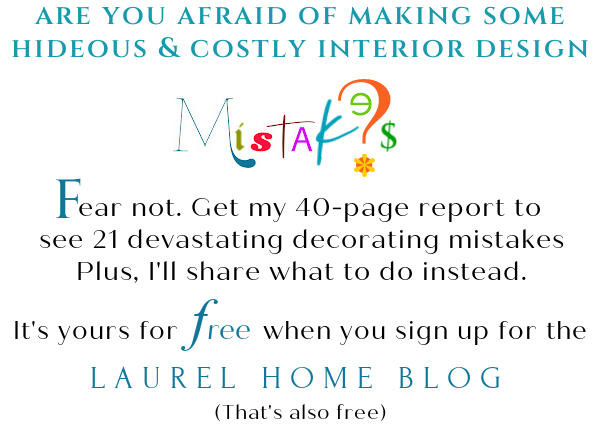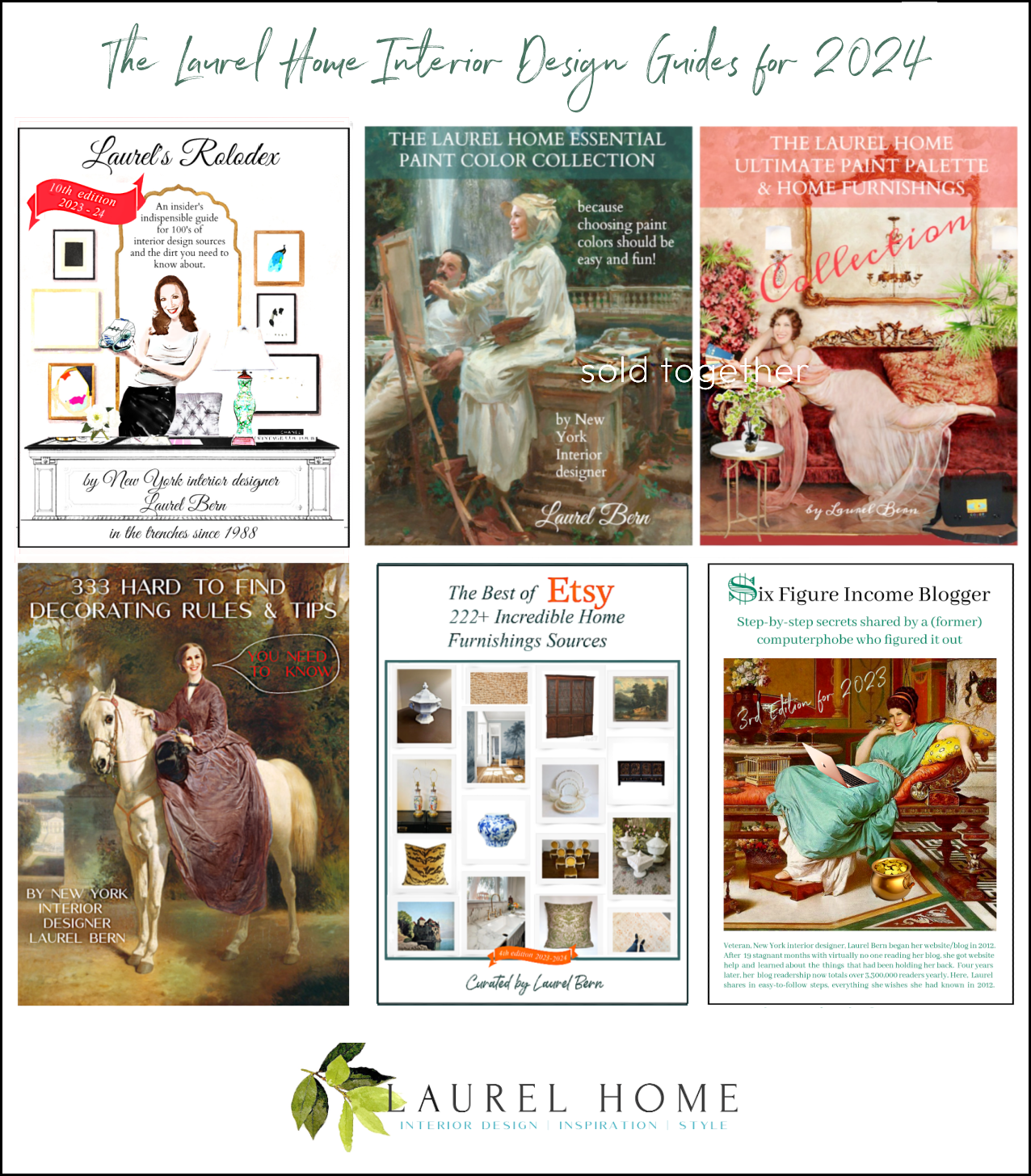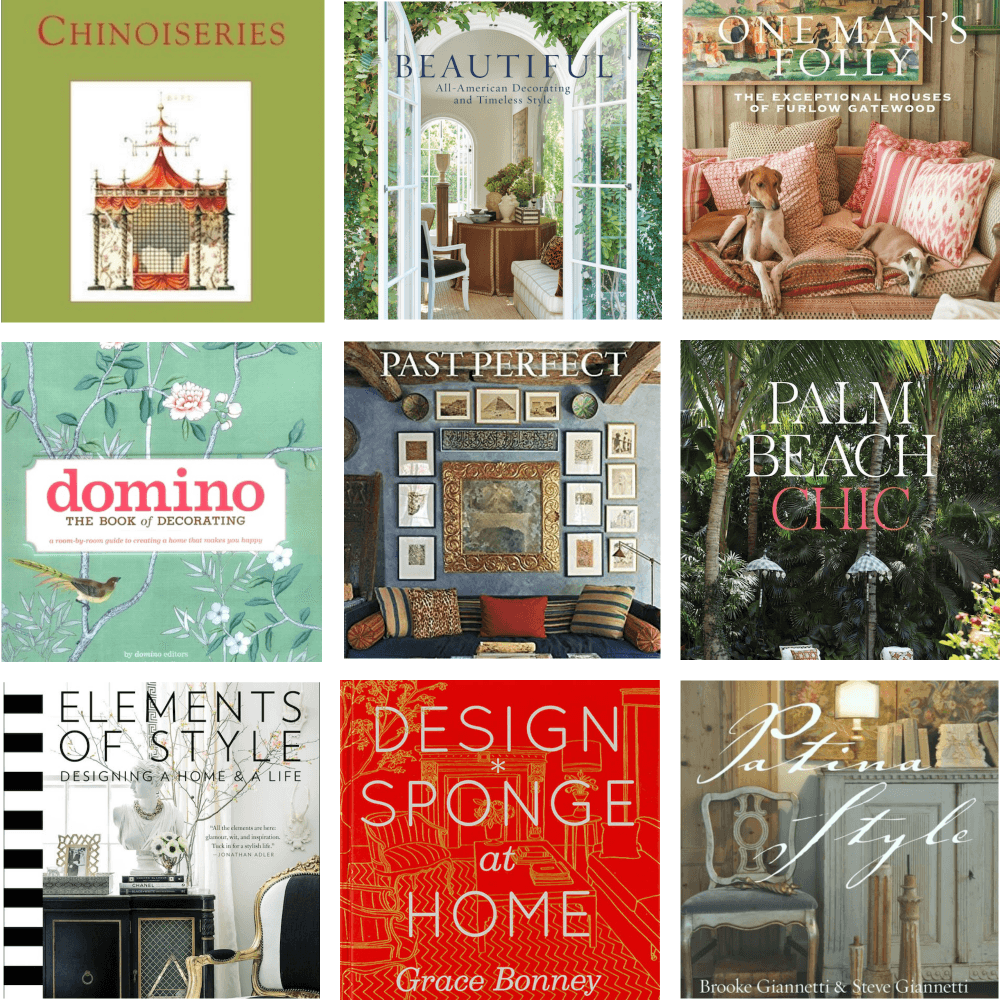Actually, the title should be, What is the difference between an interior designer and an interior decorator? However, I am only allowed 70 characters for my titles. :]
To put it succinctly, an interior decorator has not had any formal training; an interior designer, has. Albeit, it’s not quite as simplistic as that. I went to the New York School of Interior design full-time, for three years. After that, I’ve had 22+ years of working experience, working on well over 200 residences. And in the eyes of some authorities, I should really be calling myself a decorator.
I do not like that word. Oh, it’s fine if you call me that; I’ve been called worse. However, for me, it conjures up the idea of some snooty socialite who relies solely on the fact that she has really, really “good taste” and a penchant for fine things.

Patricia Neal in Breakfast At Tiffanys
Before I go on… I realize that what I’m about to say is apt to whip up another shitestorm because it’s quite a loaded topic amongst us “interior” professionals. However, I do think that my views are shared by the majority of us residential interior designers. My aim isn’t to rile y’all up. [although, perhaps that’s unavoidable?] Also, some of my colleagues who follow my blog belong to ASID [American Society for Interior Designers] and I respect them immensely and for doing whatever works for them and their business.
However, from my standpoint, I don’t have any use for ASID whatsoever and I am going to tell you why. Let’s start with the fact that I have been asked exactly twice in the last 22 years if I even belong. My clients in NY either don’t know or don’t care or both. They want to know that they will get a beautifully designed home by an experienced professional and you don’t need to belong to ASID to provide that. I used to belong as an allied member, but decided several years ago that it was a complete and total waste of money.
Here is why I think that ASID sucks.
Decades ago, they came up with this qualifying exam called the NCIDQ. [National Council for Interior Design Qualification]. They grandfathered in the old-timers, but then decided in the 80’s that if you wanted to be a full-card carrying member of ASID, ya had to pass the test. The test is heavily biased towards contract [commercial] interior design. You have to know stuff like commercial building codes and all about fire-retardant materials, etc. That is certainly fine and even advisable IF you do contract work. But why is there not a separate qualifying test for RESIDENTIAL interior designers? There isn’t, just the one.
In addition, ASID has been lobbying for years to have an interior designer licensed before they may use the appellation — INTERIOR DESIGNER.
Here’s the problem with that. The requirements for licensure are the same as the ones to receive full admittance into ASID. Can we say conflict of interest? In addition to the NCIDQ, the prospective interior designer must receive a 4-year interior design degree from an accredited program of study and then apprentice with an ASID designer for at least two years. And then— pass the test.
The NCIDQ is expensive and requires extensive study for things that residential interior designers do not need to know. Furthermore, we are not taught most of this subject matter in our accredited interior design programs! [far from it!!!] These are specific applications like commercial building codes, fire retardant materials and handicap accessibility. [eg: the minimum width for wheelchair egress is 36”] For the average residential job, this information is completely irrelevant unless there is a special circumstance.
Now, here’s the kicker.
The failure rate for the NCIDQ is at approximately 60%! One could get the four-year accredited interior design degree, work for an ASID designer for 2 years and then not pass the test, and they will not be able to call themselves an interior designer in some states which make licensing mandatory. [NY, thank God is not one of them. If you jump through all of the draconian hoops that ASID has in place, you may then call yourself a CERTIFIED INTERIOR DESIGNER in the state of NY.]
Jolly good.
Here are the rest of the problems.
There are few ASID designers around. Only about 3% of all interior designers are full card-carrying members. The rest are allied members who have no privileges except to be able to say that they are “allied ASID” Big effing whoop.
Dare I deem to add a soupcon of logic here? If I have already been a practicing interior designer for 22 years, why pray tell, would I or could I then “train” under an ASID interior designer? It’s even possible that I might know more than her. [I said, possible and I am certainly not above learning new things. I do all the time.] If I was a young designer, just out of design school, how on earth am I supposed to find a job working for someone when 97% of my prospective employers do not even belong to ASID?
Hmmmm…. Sounds like they are trying to smoke some of us out? Oh dear me. Someone please explain to me how this could be good for our profession?
There’s more.
Even IF one met all of these technical requirements, it doesn’t mean that they are a good designer. Being a good designer means so many things. What good is it if a designer can make a gorgeous room full of fire-retardant materials, but then, is a total bitch to her clients and vendors?
I was one of the thousands of allied ASID members who made a quick exit circa 2008. I decided that it’s all a big con. They did absolutely nothing for me. In fact, one time when I was having a difficult problem and needed advice, they were as helpful to me as last week’s grocery coupons and about as warm too.
Again, for my friends and colleagues who for whatever their reasons are full card-carrying members of ASID, did the hard work and became accredited, I am not going to disparage that. However, I have a big problem with the hypocrisy and obvious corruption that’s taking place within this organization. I have seen their lonely, cold booth at the New York Now show. It doesn’t have to be this way.
Hey, they don’t even have a group health plan! That would actually be an incentive to join. Not their ferkakta, irrelevant test!
There’s another crucial point that ASID seems to have overlooked. As interior designers, licensed or not, we do not have the authority to be general contractors or to move walls. Never.
Only licensed architects can submit building plans for approval and only licensed contractors can carry out the work. I always use these professionals for this type of work.
Well, Laurel, that is all very interesting, so tell me, what DO Interior designers need to know in order to be able to call themselves interior designers as opposed to a pillow-fluffing decorator?
THAT is a very good question and here is my list of requirements that an interior designer needs to know. [in addition to pillow fluffing] ;]
- Color theory
- Space planning
- Basic Drafting and drawing skills – including knowledge on how to make scale drawings in plan and elevation. Perspective drawing is very good to know too.
- Knowledge of Historical Styles
- Materials and methods used in building construction
- Furniture Design
- Lighting Design
- Interior design business including the drafting up of contracts, billing, pricing, maintaining an office and employees
- specification rules. [This was completely glossed over at the New York School of Interior Design. I hope that’s changed. I learned it all in the four years that I worked for other people after I had finished.]
Any 2-year accredited interior design school can teach this. There is also some overlap with art majors. There is a lot of overlap between interior design school with architectural school, But we are NOT architects and definitely not contractors.
At the New York School of Interior Design where I went for three years, I went way beyond all of the basic requirements. I spent 1000s of hours making gorgeous ink on mylar architectural drawings–16 huge pages complete with a lighting plan. I made scale models of homes and apartments and I did photo-realistic renderings of everything from faucets to home exteriors and interiors. I even did a shopping mall complete with logo carrying the design theme all the way down to the shopping bags! And a lot more! It was a lot of fun and certainly fulfilled a lot of my creative yearnings. However, at least 90% of what I know and USE on a day-to-day basis in my business, I learned AFTER I finished my three years at interior design school.
Ironically, near the end of my term, I did win an ASID sponsored scholarship at the New York Design Center beating out 40 of my colleagues for a $2,000 scholarship. For that, I am very honored and grateful. It is something I am exceedingly proud of. I was eight months pregnant and interior design giant Juan Montoya* was one of the judges.
*[more about Juan and some others in my next post; shocking stuff too!]
The main point of all of this is that the difference between a designer and a decorator might actually be nothing.
Speaking of super-star legends of the interior design field, I have here, nine of some of the finest from the early advent of the profession, to the hottest tickets currently around.
1. Barbara Barry 2. Darryl Carter 3. Sister Parish
4. Jonathan Adler 5. Nancy Lancaster 6.Vicente Wolf
7. Kelly Wearstler 8. Nate Berkus 9. Elsie De Wolfe
Okay. question. Can you pick out which ones of these are “interior decorators” and which ones are “interior designers?”

To be continued…
WHAT? You’re not going to tell us?
Yes, you can see part II which explains all, by clicking here.
xo,
![]()
Related Posts
 The Trick to Choosing Color Schemes|Analogous Colors
The Trick to Choosing Color Schemes|Analogous Colors 3 Interior Design Trends You’ll Regret and 3 Keepers
3 Interior Design Trends You’ll Regret and 3 Keepers The best sofa to buy | Laurel’s #1 pick!
The best sofa to buy | Laurel’s #1 pick! Why Bunny Williams’ Husband Hates Me
Why Bunny Williams’ Husband Hates Me The Most Important Thing You Need When Buying Furniture
The Most Important Thing You Need When Buying Furniture 20 Great Fireplace Mantel Decorating Ideas
20 Great Fireplace Mantel Decorating Ideas Benjamin Moore Paint Colors Matched to Farrow and Ball 2015!
Benjamin Moore Paint Colors Matched to Farrow and Ball 2015!










21 Responses
All of your points are valuable as this is so widely discussed! I just wanted to put a couple thoughts out there. I’m a Canadian student taking an Honors Bachelor of Interior Design. My program in first year has started to teach all of the above that you mentioned wasn’t in the curriculum many years ago. We learn residential, corporate, health care, hospitality, and for sure building code. In Canada its an undergrad to architecture.
Hi SOD,
Thanks for weighing in. From what I understand, it still hasn’t changed in the US.
Hi Laurel,
I came across your post looking into this exact topic for California. I’m having a really hard time finding any legal writings about if you can or can not call yourself an Interior Designer here. I’m leaning toward the belief that you can, because everything I’m finding references only “Certified” or “Licensed” Designers. Would you happen to have a list, or know where to find one of the states that require the certification in order to use the phrasing “Interior Designer”?
Thanks!
Hi Samantha,
You might try contacting ASID.
“There’s another crucial point that ASID seems to have overlooked. As interior designers, licensed or not, we do not have the authority to be general contractors or to move walls. Never.
Only licensed architects can submit building plans for approval and only licensed contractors can carry out the work. I always use these professionals for this type of work.”
THIS. I wish more people understood this. This point alone makes things like the NCIDQ completely unnecessary.
Thank you for writing this post. There’s so much to identify with. I was so frustrated with ASID coming out of college. You tell them you don’t want to be a part of them anymore (costs outweighed the benefits) and they come at you worse than magazine telemarketers, desperate for your continued subscription money. Two years later I was *still* being pestered by them.
Also, I don’t like how when applying for trade programs online there often isn’t an option listed for “independent designer” when asked what professional organizations you’re affiliated with. It’s like it doesn’t even register that independents exist. (Of course, they’re happy to accept you eventually, though that requires an additional phone call/email explaining your situation.)
I’m quite young and still have much to learn. I’m just glad I live in a state where practice and title acts don’t apply. Considering possibly moving to Chicago someday, though. Not fond of the regulations there…
Hi Tiyana,
Thanks for stopping by and sharing your experience. Yes, they use bullying tactics. Several years ago, I got a letter saying if I didn’t reinstate my membership by a certain date, that if I wanted to after that, I’d have to start all the way back at the beginning.
huh?
Go straight to jail. Pass home. Do not collect 200 bucks you naughty girl! lol
No patience for that. No patience at all!
Actually, maybe i should elaborate. Im nearly finished with my associates in interior design and am starting to worry. I dont have the time nor the money to continue on with a BA in interior design. Im ready to start now, but all this NCIDQ stuff has me backtracking. Did I go through with an associates just to be able to do nothing with it? I dont have the resources to go to school much longer. I have to work to survive. Which draws out school even longer due to the fact that I have to earn a paycheck and can only go part-time. Very worried that i chose a career I cant do because Im only going to have an associates.
Hi Gina, Lots of designers have fabulous careers with no formal training whatsoever. Nobody has EVER asked about my training. However, certain parts of the country may be somewhat different. Still… demonstrating ones talent is the best testament to a designer’s abilities, I think.
My question is this… besides the fact that i cant call myself a ‘designer’ can i still do as a decorator anything a designer can do? Like, if I do a job, and want to take a wall down, create a sky light, who knows, can I do that even though im not a ‘designer’ in the eyes of the law?
I have been a professional for 18 years, first as a decorator, then as a designer, after getting my B.F.A. (3.94 g.p.a.) at an “accredited” university program. I was shocked that my instructors were proud to announce that they would not be preparing students for a career in residential design. The program did teach me how to do basic space planning, drafting and prepare some construction documents; however, I was not impressed with the constant emphasis on minutia such as expecting students to visually identify little snippets of fibers for a test, memorizing names of numerous commercial fire codes (which everyone will forget and should be looked up anyway if they ever apply to a project), technical names of light bulbs like MR16 (how did we survive before that?), and I could go on. What it did not prepare me for was anything structural. There was one column of one page of a binder that the teacher required students to buy that was devoted to the subject of “Can a wall be removed?” There were no visits to construction sites, none. Designers are not given the technical/mathematical courses required to understand this. Sad.
Dear Frightened,
Sounds very typical and yes, sad because ID school does not prepare one for a career as a residential designer. Or at least it didn’t when I went in the late 80’s. It sounds like things haven’t changed much. Thanks for your thoughtful comment!
Dear Laurel,
I stumbled upon your website while researching how to cut ties with a client. It’s the first time I’ve ever had to do that- ‘Huh? My Interior Designer Fired Me! What Went Wrong?’ was a riot.
And this post had me cracking up too! Especially: “What good is it if a designer can make a gorgeous room full of fire-retardant materials, but then, is a total bitch to her clients and vendors?” Excellent question, Laurel, excellent question!
I have similar feelings about ASID. I started working on a graduate level design degree when I moved to DC. I was fortunate enough to also be hired as a project manager for Thomas Pheasant. Tom is not affiliated with ASID, so I asked my professor how I would be able to sit for the exam – she told me to quit my job and work for someone with the affiliation. I mean, we are talking about working alongside an AD100 Designer!?! I left the program shortly after that – it just didn’t make any sense to me.
Again, thank you so much for the laughs! Great blog!
-Christine
Spot on, Laurel! I couldn’t have stated it better myself. I’m an interior designer who has dedicated almost 10 years to stopping ASID’s agenda to impose licensing in all 50 states. My organization is Interior Design Protection Consulting, and I’ve helped to derail more than 150 regulatory efforts across the country. I was even invited to testify in front of the U.S. House of Representatives this past March. I just wish there were more designers like you, willing to challenge ASID on their anti-competitive licensing scheme — it would definitely make my job easier.
Best regards to you!
~Patti Morrow
Thank you so much Patti! I believe that I came across some of your articles in my research, but I am going to publish another post in a few after I’ve triple checked it. I’m going to include your link as well. And thank you too, for your good work! xo, Laurel
Hi Sarah,
Thanks for stopping by! I totally concur with the hobbyists who think that they can go into this with no training or experience.[the ones with really, really good taste] [eyes rolling]
It’s funny. My first job out of design school was working for a decorator. And she was definitely a decorator. I remember saying, “S, don’t you think we should do a room layout?” And her response was, “oh, that’s not necessary, I can just look at the space and know what will fit and what won’t.” yes. scary.
I learned SO much from her. I learned from the zillions of mistakes she made! haha! Working with a decorator who half the time had no idea what she was doing. [although she thought that she did] was the best training of all!
and she had no contract. no design fee. People took advantage and then she would complain. oh well. It WAS a hobby for her and it drove me nuts sometimes.
Here in Canada, being an accredited interior decorator means the same thing as being an interior designer does in the US. Your list of requirements for being an interior designer is what I took in school – a 2 year full time interior decorating college diploma program.
I have 10 years of experience and do full renovations, move walls (my drawings are perfectly acceptable for building permits) and I’m the general contractor/project manager on nearly all of my projects. Interior designers here learn HVAC and electrical systems, commercial and residential building codes, and hospitality and government space planning. In Ontario specifically you can’t call yourself an ‘interior designer’ unless you have a diploma of interior design, have passed your NCIDQ exams and are a member of ARIDO (Ass. of Registered Interior Designers of Ontario). The title is protected by law and you can be fined up to $2000 for calling yourself an ID without being a member, not that that stops anyone.
Unfortunately there is no regulating body for decorators so anyone can call themselves such. My problem is the hobbyists whose friends tell them their house is nice and decide to start taking clients when they have no training or experience. It’s terrible for the industry.
Laurel, I appreciate your explaining the difference between interior decorator and interior designer. When I took the NCIDQ one section (the drawing) was residential and some of the questions in the theory section were also residential. we still needed the codes, though.
I learned a lot as a member of ASID. I was treasurer for the Intermountain chapter for two years, then president-elect (obviously) and president. It was pretty much a thankless task. That said having my way paid to the SuperCampus which became another name, and now it is held at Neocon. The interesting thing is that ASID is considered a more residential design organization while IDAA is considered commercial. My projects have been 50/50 between the two. So I did use the knowledge I found by taking the CEUs to remain qualified. I did a residential design for a man who had muscular dystrophy and most definitely needed to know about design for the handicapped.
You are right about getting clients…it doesn’t help much. I did find it worth the money in terms of learning experiences. I’m sorry your experience was so negative.
Hi Karan,
Thank you so much for such a wonderful answer. That is all very interesting.
Unfortunately, before you replied a troll came on here and attacked me personally. Those kinds of comments are not allowed on my blog. Therefore, I had to delete it.
I do welcome and appreciate thoughtful, respectful comments such as yours; even if they disagree with me.
I was thinking about the fact that my only experience with ASID is in NY and perhaps that is part of the problem? At the time I was dealing with them, they were anything but nice or helpful. Maybe it’s changed. I don’t know, but then again, there was no benefit to my practice for being an allied member. And it was money out of pocket that I could not afford at the time. It was the beginning of the recession and my wasband was often out of work.
There have been times when I am presented either with something new, like a new material or specific need that I have never done before. In those cases, I research it all extensively and/or get a professional opinion from an expert in that area. It is my practice to question EVERYTHING.
So far, it’s all worked out pretty well. Of course, we all make mistakes. That is unavoidable. I just try not to make the same ones twice! :]
Thanks again for stopping by! You are always most welcome! x ~ Laurel
Loving your blog Laurel! This was great insight into ASID. Though I’m Canadian we too, have the designer vs decorator struggles. And nothing like 23 years in the business (not as a hobbyist:)) to teach you a thing or two. Signed, a decorator.:)
First of all, as in most professions, one doesn’t know anything until out of school, learning in the field. My daughter, upon graduating Harvard Law, has told me she actually knew very little until she went to work in a law firm. That’s why first and second year associates are worked to the bone. They’re being trained to practice the law.
Certainly Sister Parish, Nancy Lancaster, Dorthy Draper, were all decorators. And they are iconic today. They were “society decorators” in addition, a la Patricia Neal. Big time wealth and big time social snobs. I don’t get the hang up about decorator- designer.
Anyone can call me a house painter anytime.
Thank you for explaining ASID. I never fully understood the term. It does sound cruelly unfair.
you’re so right Dianne about learning on the job. You can’t believe the number of “arts and crafts” type projects we did. In one course, so-called “materials and methods,” I made a mobile I put over my baby’s crib made out of waxed paper, string and sticks. Seriously. I also made a collage out of glass I picked up on NYC streets. I found out two days later that I was pregnant! haha! Then, there were the gouache paint collages. This is what is required by ASID to become a “qualified” interior designer. I think the hang-up is more that in some areas it is ILLEGAL to call yourself an interior designer. Even if you’ve been calling yourself that for the last 30 years. Oh, there’s a lot more coming!